-
 Bitcoin
Bitcoin $106,077.7663
-2.62% -
 Ethereum
Ethereum $2,644.4634
-6.15% -
 Tether USDt
Tether USDt $1.0002
0.01% -
 XRP
XRP $2.1872
-4.65% -
 BNB
BNB $653.9698
-2.13% -
 Solana
Solana $153.1055
-6.13% -
 USDC
USDC $0.9995
-0.02% -
 Dogecoin
Dogecoin $0.1816
-7.39% -
 TRON
TRON $0.2711
-2.62% -
 Cardano
Cardano $0.6627
-6.02% -
 Hyperliquid
Hyperliquid $41.2391
-2.26% -
 Sui
Sui $3.2151
-6.48% -
 Chainlink
Chainlink $13.9480
-8.21% -
 Avalanche
Avalanche $20.3371
-6.68% -
 Bitcoin Cash
Bitcoin Cash $426.8582
0.05% -
 Stellar
Stellar $0.2690
-3.73% -
 UNUS SED LEO
UNUS SED LEO $8.8698
-1.89% -
 Toncoin
Toncoin $3.0810
-5.36% -
 Shiba Inu
Shiba Inu $0.0...01223
-7.14% -
 Hedera
Hedera $0.1640
-6.34% -
 Litecoin
Litecoin $86.5702
-6.14% -
 Polkadot
Polkadot $3.9430
-6.93% -
 Ethena USDe
Ethena USDe $1.0004
-0.03% -
 Monero
Monero $316.4579
-4.76% -
 Bitget Token
Bitget Token $4.6091
-4.34% -
 Dai
Dai $1.0001
0.02% -
 Pepe
Pepe $0.0...01157
-8.95% -
 Uniswap
Uniswap $7.6778
-4.82% -
 Pi
Pi $0.6144
-3.05% -
 Aave
Aave $290.2271
-5.59%
How to operate after breaking through the downward trend line? Precautions for confirmation of retracement
After breaking a downward trend line, confirm with volume and indicators, then reassess sentiment, set entry points, and manage risk with stop-losses and profit targets.
Jun 10, 2025 at 07:07 am
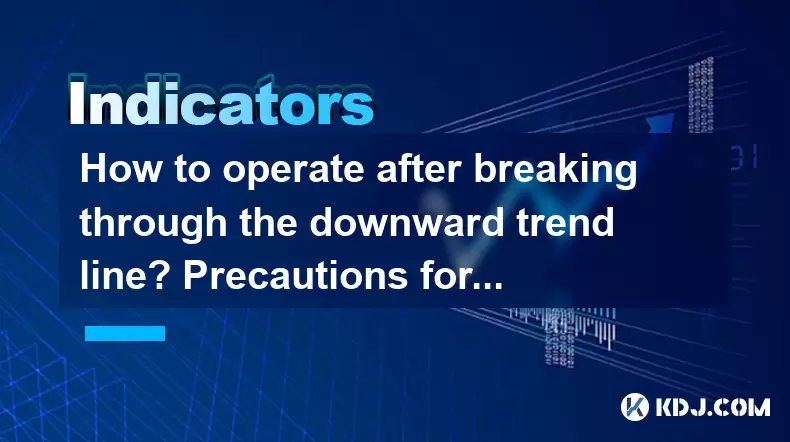
How to Operate After Breaking Through the Downward Trend Line? Precautions for Confirmation of Retracement
In the world of cryptocurrencies, understanding how to operate after breaking through a downward trend line is crucial for traders looking to capitalize on potential bullish movements. A downward trend line is a line drawn along the swing highs of a price chart, indicating a bearish trend. When the price breaks above this line, it suggests a potential shift in market sentiment from bearish to bullish. This article will guide you through the steps to take after such a breakout and the precautions to consider when confirming a retracement.
Understanding the Breakthrough of a Downward Trend Line
A breakthrough of a downward trend line signals that the bearish momentum may be weakening, and a bullish reversal could be on the horizon. Identifying a valid breakout is essential. A valid breakout is typically confirmed when the price closes above the trend line with significant volume, indicating strong buying pressure. Traders should also look for other technical indicators, such as the Relative Strength Index (RSI) or Moving Average Convergence Divergence (MACD), to support the breakout.
Steps to Take After a Breakthrough
Once a valid breakout is confirmed, traders should consider the following steps:
Reassess the Market Sentiment: After a breakout, it's important to gauge the overall market sentiment. Look at news, social media, and other market indicators to understand if the bullish sentiment is widespread or if it's isolated to a particular cryptocurrency.
Set Entry Points: Identify potential entry points for long positions. These could be at the breakout level or after a minor retracement, which we'll discuss in detail later.
Determine Stop-Loss Levels: Set stop-loss orders below the breakout level to manage risk. A common practice is to place the stop-loss just below the most recent swing low before the breakout.
Plan Profit Targets: Establish profit targets based on technical analysis. Fibonacci retracement levels, previous resistance levels, and psychological price levels can serve as potential targets.
Precautions for Confirmation of Retracement
A retracement is a temporary reversal in the direction of a price trend that goes against the prevailing trend. After a breakout from a downward trend line, it's common to see a retracement before the new bullish trend continues. Here are some precautions to take when confirming a retracement:
Wait for Confirmation: Don't rush to enter a position during a retracement. Wait for the price to show signs of resuming the bullish trend, such as breaking above a short-term resistance level or showing bullish candlestick patterns.
Use Technical Indicators: Utilize technical indicators like the RSI, MACD, or Stochastic Oscillator to confirm the strength of the retracement and the potential for a continuation of the bullish trend.
Monitor Volume: Volume should decrease during the retracement and increase when the price starts to move higher again. A decrease in volume during the retracement suggests that selling pressure is waning, which is a positive sign for the bullish trend.
Trading Strategies During Retracement
When a retracement occurs after breaking through a downward trend line, traders can employ several strategies:
Buy the Dip: One popular strategy is to buy the dip during the retracement. This involves entering a long position at a lower price with the expectation that the bullish trend will resume. Ensure that the retracement level aligns with key support levels or Fibonacci retracement levels.
Use Moving Averages: Another strategy is to use moving averages to identify potential entry points. For example, if the price retraces to the 50-day moving average and finds support, it could be a good entry point for a long position.
Set Trailing Stop-Losses: To manage risk during a retracement, consider using trailing stop-losses. This allows you to lock in profits as the price moves higher while still protecting against a potential reversal.
Monitoring and Adjusting Positions
After entering a position following a breakout and retracement, it's essential to monitor the market closely and adjust your positions as needed. Here are some tips for monitoring and adjusting:
Keep an Eye on Key Levels: Continuously monitor key support and resistance levels. If the price breaks below a critical support level, it may be time to exit the position.
Adjust Stop-Losses: As the price moves in your favor, adjust your stop-losses to lock in profits. Trailing stop-losses can be particularly useful in this scenario.
Stay Informed: Stay updated with the latest news and market developments. Sudden changes in market sentiment can impact your positions, so being informed is crucial.
Risk Management and Position Sizing
Effective risk management is vital when trading after a breakout from a downward trend line. Consider the following risk management strategies:
Position Sizing: Determine the size of your position based on your risk tolerance and the distance to your stop-loss level. A common rule of thumb is to risk no more than 1-2% of your trading capital on any single trade.
Diversify: Avoid putting all your capital into one cryptocurrency. Diversify your portfolio to spread risk across different assets.
Use Leverage Wisely: If you're using leverage, be cautious. High leverage can amplify both gains and losses, so use it judiciously and always have a clear risk management plan in place.
Frequently Asked Questions
Q: How do I know if a breakout from a downward trend line is false?
A: A false breakout can often be identified by a lack of follow-through after the initial move above the trend line. Look for signs such as a quick reversal back below the trend line, low trading volume during the breakout, and conflicting signals from other technical indicators. If these factors are present, it may be a false breakout.
Q: Can a breakout from a downward trend line occur without significant volume?
A: While a breakout with significant volume is more likely to be valid, it's not impossible for a breakout to occur without high volume. In such cases, additional confirmation from other technical indicators and market sentiment is crucial to validate the breakout.
Q: What should I do if the price breaks back below the downward trend line after a breakout?
A: If the price breaks back below the downward trend line after a breakout, it's a sign that the bullish momentum may not be as strong as initially thought. In this scenario, consider exiting your long positions to minimize losses. Reassess the market conditions and wait for another valid breakout before re-entering.
Q: How long should I wait for a retracement to confirm before entering a position?
A: The duration of a retracement can vary, but a common approach is to wait for the price to show signs of resuming the bullish trend, such as breaking above a short-term resistance level or displaying bullish candlestick patterns. This could take anywhere from a few hours to a few days, depending on the market conditions. Patience is key, and it's better to wait for a confirmed signal than to enter prematurely.
Disclaimer:info@kdj.com
The information provided is not trading advice. kdj.com does not assume any responsibility for any investments made based on the information provided in this article. Cryptocurrencies are highly volatile and it is highly recommended that you invest with caution after thorough research!
If you believe that the content used on this website infringes your copyright, please contact us immediately (info@kdj.com) and we will delete it promptly.
- Introducing Neo Pepe Coin - The Meme Coin Presale Event of 2025
- 2025-06-13 06:00:21
- GameStop Corp. Announces a $1.75 Billion Convertible Notes Offering
- 2025-06-13 06:00:21
- Binance Has Officially Reopened Its Services to Users in Syria
- 2025-06-13 05:55:12
- Trident Digital Tech Holdings to Start an XRP (XRP) Treasury of Up to $500 Million
- 2025-06-13 05:55:12
- "Where to invest $1,000 right now? Our analyst team just revealed what they believe are the 10 best stocks to buy right now."
- 2025-06-13 05:51:59
- VivoPower Partners with Flare to Launch a 100 Million Strategy Utilizing XRP
- 2025-06-13 05:51:59
Related knowledge
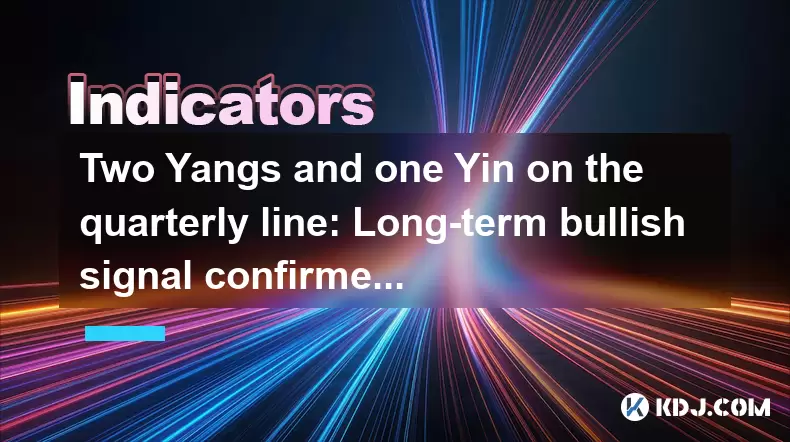
Two Yangs and one Yin on the quarterly line: Long-term bullish signal confirmed?
Jun 12,2025 at 07:00am
Understanding the 'Two Yangs and One Yin' Candlestick PatternIn technical analysis, candlestick patterns play a pivotal role in identifying potential market reversals or continuations. The 'Two Yangs and One Yin' pattern is one such formation that traders often observe on longer timeframes like the quarterly chart. This pattern consists of two bullish (...
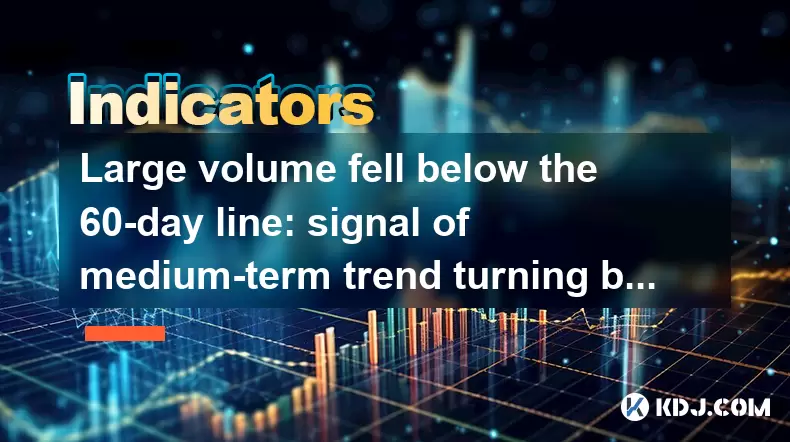
Large volume fell below the 60-day line: signal of medium-term trend turning bearish?
Jun 13,2025 at 03:42am
Understanding the 60-Day Moving Average in CryptocurrencyIn cryptocurrency trading, technical analysis plays a crucial role in predicting price movements. One of the most commonly used indicators is the 60-day moving average (MA), which smooths out price data over the last 60 days to provide traders with insights into the medium-term trend. When large v...
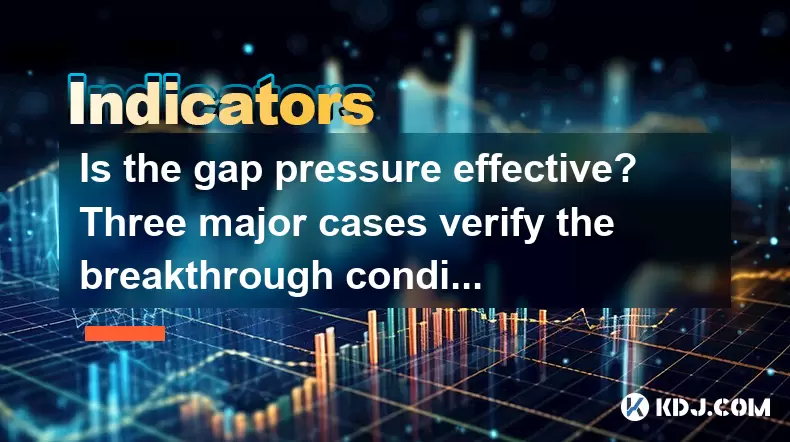
Is the gap pressure effective? Three major cases verify the breakthrough conditions
Jun 13,2025 at 04:35am
Understanding the Gap Pressure in Cryptocurrency TradingIn cryptocurrency trading, gap pressure refers to a technical analysis concept where price gaps form due to sudden market movements. These gaps often occur between the closing price of one trading session and the opening price of the next. Traders pay close attention to these gaps because they can ...
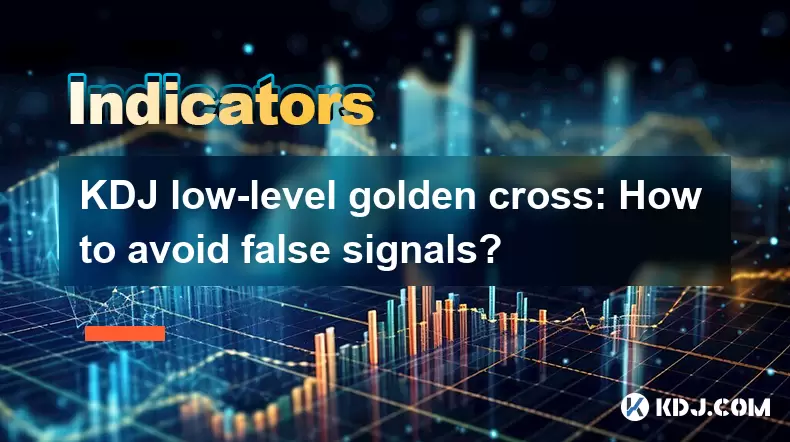
KDJ low-level golden cross: How to avoid false signals?
Jun 12,2025 at 08:21am
Understanding the KDJ IndicatorThe KDJ indicator, also known as the stochastic oscillator, is a momentum-based technical analysis tool widely used in cryptocurrency trading. It consists of three lines: the %K line (fast stochastic), the %D line (slow stochastic), and the %J line (divergence value). These lines oscillate between 0 and 100, helping trader...

Bottom-up volume stagnation: Is it accumulation or heavy selling pressure?
Jun 12,2025 at 01:42pm
What Is Bottom-Up Volume Stagnation?Bottom-up volume stagnation refers to a specific pattern observed in cryptocurrency trading charts where the price of an asset moves sideways or slightly downward, and trading volume remains consistently low over an extended period. This phenomenon is often seen after a sharp price drop or during a prolonged bear mark...
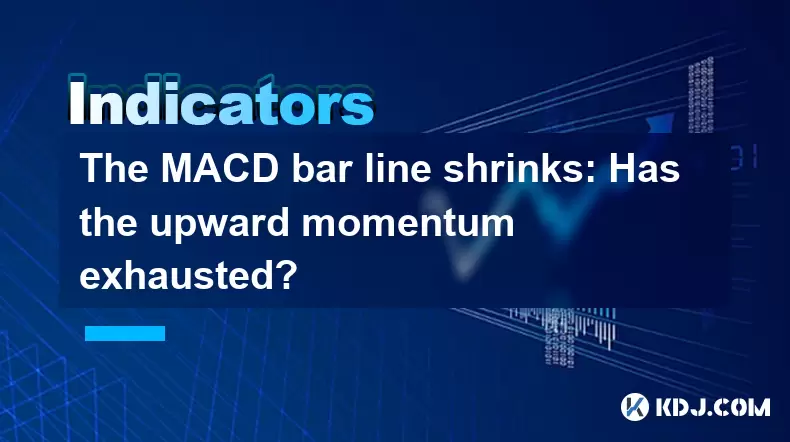
The MACD bar line shrinks: Has the upward momentum exhausted?
Jun 12,2025 at 12:49am
Understanding the MACD Bar LineThe Moving Average Convergence Divergence (MACD) is a widely used technical indicator in cryptocurrency trading. It consists of three main components: the MACD line, the signal line, and the MACD histogram (also known as the bar line). The MACD bar line represents the difference between the MACD line and the signal line. W...

Two Yangs and one Yin on the quarterly line: Long-term bullish signal confirmed?
Jun 12,2025 at 07:00am
Understanding the 'Two Yangs and One Yin' Candlestick PatternIn technical analysis, candlestick patterns play a pivotal role in identifying potential market reversals or continuations. The 'Two Yangs and One Yin' pattern is one such formation that traders often observe on longer timeframes like the quarterly chart. This pattern consists of two bullish (...

Large volume fell below the 60-day line: signal of medium-term trend turning bearish?
Jun 13,2025 at 03:42am
Understanding the 60-Day Moving Average in CryptocurrencyIn cryptocurrency trading, technical analysis plays a crucial role in predicting price movements. One of the most commonly used indicators is the 60-day moving average (MA), which smooths out price data over the last 60 days to provide traders with insights into the medium-term trend. When large v...

Is the gap pressure effective? Three major cases verify the breakthrough conditions
Jun 13,2025 at 04:35am
Understanding the Gap Pressure in Cryptocurrency TradingIn cryptocurrency trading, gap pressure refers to a technical analysis concept where price gaps form due to sudden market movements. These gaps often occur between the closing price of one trading session and the opening price of the next. Traders pay close attention to these gaps because they can ...

KDJ low-level golden cross: How to avoid false signals?
Jun 12,2025 at 08:21am
Understanding the KDJ IndicatorThe KDJ indicator, also known as the stochastic oscillator, is a momentum-based technical analysis tool widely used in cryptocurrency trading. It consists of three lines: the %K line (fast stochastic), the %D line (slow stochastic), and the %J line (divergence value). These lines oscillate between 0 and 100, helping trader...

Bottom-up volume stagnation: Is it accumulation or heavy selling pressure?
Jun 12,2025 at 01:42pm
What Is Bottom-Up Volume Stagnation?Bottom-up volume stagnation refers to a specific pattern observed in cryptocurrency trading charts where the price of an asset moves sideways or slightly downward, and trading volume remains consistently low over an extended period. This phenomenon is often seen after a sharp price drop or during a prolonged bear mark...

The MACD bar line shrinks: Has the upward momentum exhausted?
Jun 12,2025 at 12:49am
Understanding the MACD Bar LineThe Moving Average Convergence Divergence (MACD) is a widely used technical indicator in cryptocurrency trading. It consists of three main components: the MACD line, the signal line, and the MACD histogram (also known as the bar line). The MACD bar line represents the difference between the MACD line and the signal line. W...
See all articles

























































































